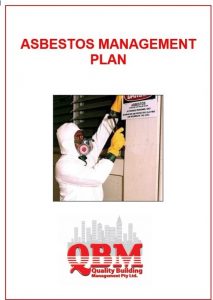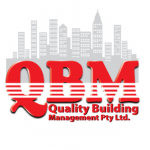Asbestos management must be conducted when the presence of the mineral has been confirmed in any location. All non-residential properties are required by law to have an Asbestos Management Plan (AMP). The management of asbestos should be performed either by the property manager or by anyone else directly responsible for the building. Failure to manage asbestos for any reason can result in heavy fines.
How to Conduct Asbestos Management
The asbestos management process is comprised of identification of the mineral, assessment prioritisation or risk, control plan, and monitoring. The person in control must ensure that the risks associated with asbestos exposure are minimal. The management of asbestos should comply with the guidelines outlined in the “How to Manage and Control Asbestos in the Workplace” Code of Practice 2011. If removal is necessary, all procedures should be guided by the Removal of Asbestos Code.
Where to Start?
Asbestos is only a threat when the fibres are airborne. The materials that pose the greatest risk are crumbled friable asbestos and damaged or broken non-friable asbestos. If your building was constructed before 2004 then it may have asbestos containing materials (ACMs) in disrepair. If you are unsure whether your building contains asbestos containing materials (ACMs), then it is best to assume that it does and take the necessary precautions to protect yourself and those within its vicinity. A professional asbestos assessor must inspect all workplaces constructed before 2004 and evaluate the condition of the asbestos and provide advice regarding removal, control, or monitoring.
Everyone that has direct or indirect access to the location must be informed about the presence of asbestos if it is detected. The relevant signage should be used during removal. If the asbestos is in a stable matrix it may not be necessary to remove; however, signage indicating the presence of asbestos at the location should be used to inform the hazards of the asbestos containing materials (ACMs).
When Should Asbestos Management be Undertaken?
Any activity that could damage, disturb, or change the physical properties of asbestos containing materials (ACMs) should be thoroughly assessed. If your building already has an AMP, it should be reviewed and updated to reflect any changes to the premises. It is advisable to conduct asbestos management every year.
Any workplace constructed before 2004, which has been identified as containing asbestos materials, must develop an Asbestos Management Plan.

Asbestos Management
Although asbestos containing materials (ACMs) were once widely used in a variety of building products such as insulation, piping, and tiling, their use has been curtailed since the 1980s due to the widespread health hazards they pose.
Specifically, asbestos exposure has been linked directly to lung cancer and asbestosis. Because symptoms from asbestos exposure may not surface for 20 years or more, it is highly important to develop an asbestos management plan for your building to either abate any asbestos containing materials (ACMs) present or eliminate them altogether.
Learn your building’s history
If your home or building was manufactured before 2003 and has not undergone any serious revisions since then, it stands a reasonable chance of containing asbestos containing materials (ACMs) in some of its building materials. Even if your building has undergone revisions including asbestos inspection, abatement, or removal, it is very important as a building owner to be sure you have proper documentation of all asbestos containing materials (ACMs) in your building and to know what work—if any—has been conducted to contain or eliminate those materials.
Inspection
Before undertaking a remodelling or demolition job of any kind, it is extremely important to have your building inspected for asbestos containing materials (ACMs). If you do not, and construction/demolition crews encounter any asbestos containing materials (ACMs) or suspected asbestos containing materials (ACMs), you could be liable for any damages that result from their unprotected exposure. If you or an inspector discover any materials that you suspect might contain asbestos, the material will have to be thoroughly tested.
Planning
Once you have determined the extent, if any, of asbestos containing materials (ACMs) in your building, you will need to develop a plan on how to address these potential hazard areas. Here are some items worth considering:
- If the material is damaged or friable, it will have to undergo standard abatement procedures, which entail either sealing the material to prevent asbestos fibres from getting into the air or removing the material entirely.
- If the material is undamaged or non-friable, no action may be necessary. asbestos containing materials (ACMs) in good condition and in little danger of becoming damaged pose very little threat to the public at large. In this scenario, you will need to properly document the asbestos containing materials (ACMs) existence, but you likely will not need to worry about abating the material.
Operations and Maintenance Programs
Just because your asbestos containing materials (ACMs) do not pose any immediate threat does not mean that they can be ignored outright. It is greatly to your benefit to develop an Operations and Maintenance Program to ensure that the material remains in good condition as long as you’re responsible for the building.
Schedule periodic inspections of the materials. Once identified, these follow-up inspections are rather easy to conduct, and should not hamper the operations of your building. Create a written building’s operations plan as well to help maintenance workers avoid accidentally damaging or otherwise disturbing the asbestos containing materials (ACMs). Aside from this being good policy, you will greatly reduce your own liability should someone accidentally disturb these materials.

